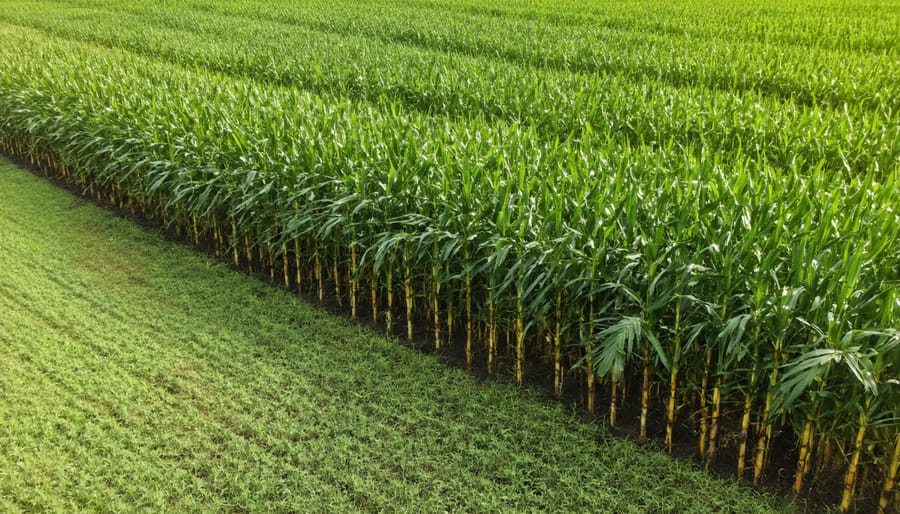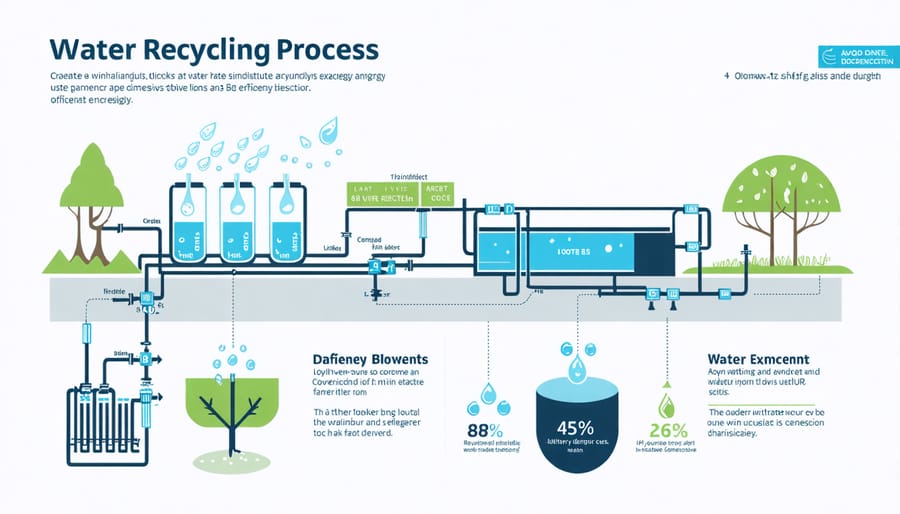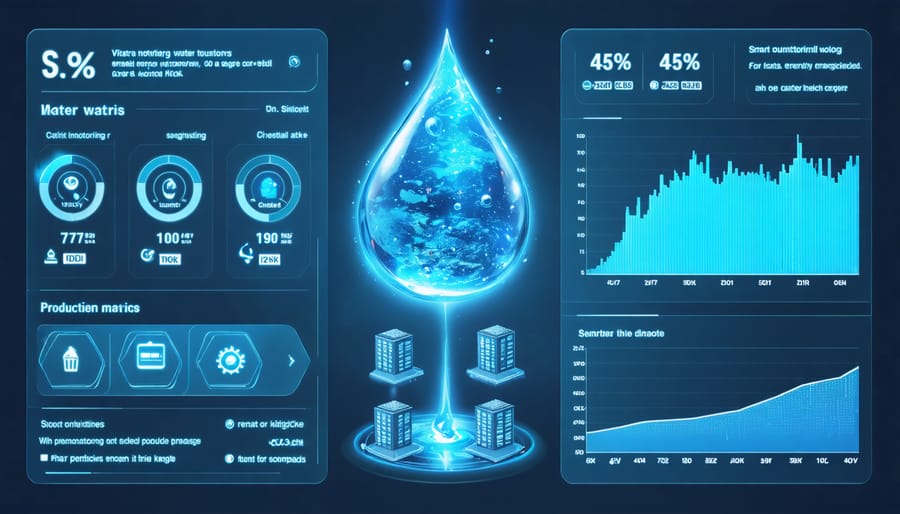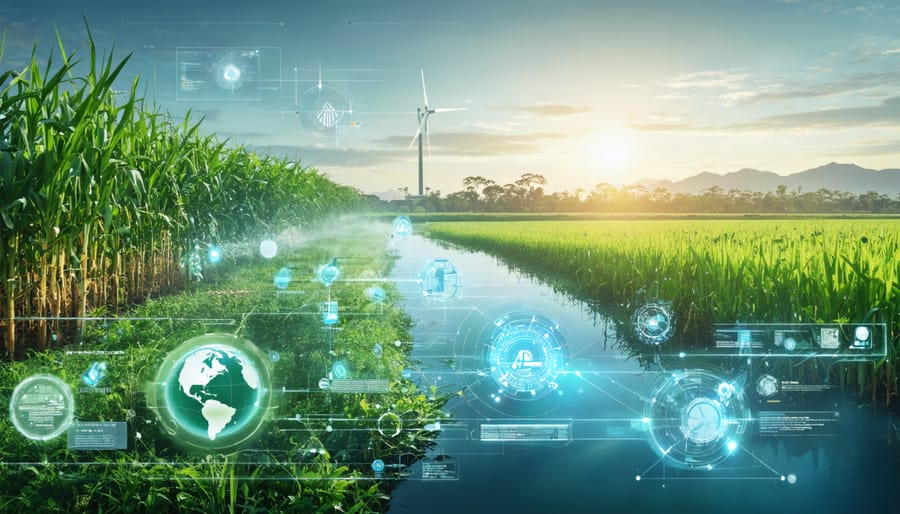In an era where energy demands continue to surge, intelligent resource management stands as the cornerstone of Australia’s sustainable future. The strategic integration of bioenergy resources in Australia alongside traditional power sources has revolutionized how we approach energy security and environmental stewardship. By implementing smart grid technologies, optimizing consumption patterns, and harnessing renewable resources, organizations across the continent are demonstrating that effective energy resource management isn’t just an environmental imperative—it’s a powerful driver of economic growth.
From the sun-drenched outback to coastal wind farms, our nation possesses an abundance of natural resources that, when properly managed, can deliver reliable, sustainable power while reducing operational costs. The transformation of these resources into viable energy solutions requires a delicate balance of innovative technology, strategic planning, and environmental consciousness. Through advanced monitoring systems and predictive analytics, modern energy resource management is evolving from simple conservation to sophisticated optimization, ensuring every kilowatt serves its highest purpose while minimizing waste and environmental impact.
The Water-Energy Nexus in Australian Bioenergy Production

Current Water Usage Patterns
Water consumption patterns in bioenergy production vary significantly across different methods, with some approaches proving more water-efficient than others. In Australia, where water scarcity is a pressing concern, understanding these patterns is crucial for sustainable resource management.
Traditional biomass crops like sugarcane and corn require substantial irrigation, using approximately 100-200 litres of water per kilowatt-hour of energy produced. However, innovative approaches are changing this landscape. Advanced algae-based biofuel production in Queensland has demonstrated promising results, using up to 75% less freshwater through closed-loop systems and recycling processes.
Waste-to-energy facilities are emerging as water-efficient alternatives, typically consuming only 20-30 litres per kilowatt-hour. The Earthpower facility in NSW exemplifies this efficiency, using minimal fresh water while processing organic waste into energy. Additionally, agricultural residue-based bioenergy production leverages existing water resources, making it particularly suitable for Australian farming communities.
Forest residues and native vegetation management for bioenergy require minimal additional water input, relying primarily on natural rainfall. This approach aligns well with Australia’s push towards sustainable resource management while supporting bushfire risk reduction efforts.
Regional Water Availability Challenges
Water availability poses a significant challenge for bioenergy development across Australia, particularly in our drought-prone regions. As our continent grapples with increasingly variable rainfall patterns, the competition for water resources between agriculture, urban needs, and energy production continues to intensify.
In Queensland’s agricultural belt, farmers are pioneering innovative water management solutions by implementing dual-purpose crops that serve both food and energy needs while optimising water usage. These smart farming practices demonstrate how careful resource management can address water scarcity concerns while supporting bioenergy production.
The Murray-Darling Basin offers a prime example of the water-energy nexus challenges. Here, water allocation decisions must carefully balance environmental flows, agricultural requirements, and emerging bioenergy opportunities. Forward-thinking producers are responding by adopting drought-resistant energy crops and water-efficient processing technologies.
Success stories from Western Australia show how integrated water management systems can support sustainable bioenergy production. For instance, some facilities now use treated wastewater for biomass cultivation, creating a circular approach that reduces pressure on fresh water supplies while generating renewable energy.
Despite these challenges, the sector continues to adapt and innovate, proving that water-smart bioenergy production is not just possible but essential for Australia’s sustainable future.
Innovative Water Management Solutions
Water-Efficient Biomass Crops
In the sun-scorched landscape of Australia, innovative farmers are pioneering water-efficient biomass production through smart cultivation techniques and drought-resistant crop selection. Leading this agricultural revolution are crops like sweet sorghum and mallee eucalyptus, which thrive in our challenging climate while requiring minimal irrigation.
Smart irrigation systems have become game-changers in this space, utilizing soil moisture sensors and weather monitoring technology to deliver precise amounts of water exactly when needed. These systems have helped reduce water consumption by up to 30% while maintaining optimal crop yields. In Queensland’s agricultural belt, farmers are implementing subsurface drip irrigation, which minimizes evaporation losses and ensures water reaches plant roots directly.
Native species like mallee eucalyptus have proven particularly successful, with their deep root systems accessing groundwater naturally and reducing the need for artificial irrigation. These hardy plants can produce significant biomass even during extended dry periods, making them ideal for sustainable energy production.
The integration of digital technology has further enhanced water efficiency. Real-time monitoring systems alert farmers to potential issues before they become problems, while AI-powered irrigation scheduling ensures water is used at peak efficiency. Some innovative properties are even incorporating recycled water systems, creating closed-loop operations that maximize resource utilization while minimizing environmental impact.
These water-smart approaches aren’t just good for the environment – they’re delivering impressive returns on investment, with many farmers reporting increased yields alongside reduced water usage.
Water Recycling Technologies
Water recycling technologies play a pivotal role in modern bioenergy facilities, exemplifying sustainable resource management practices across Australia. These innovative systems help facilities reduce their environmental footprint while maximising operational efficiency.
Leading Australian bioenergy plants employ advanced membrane filtration systems that treat process water for reuse. These systems typically incorporate multiple stages, including primary settling tanks, biological treatment, and reverse osmosis, ensuring water quality meets stringent environmental standards.
A standout example is the Riverina Bioenergy Facility, which implemented a closed-loop water system that recycles up to 85% of its process water. This system not only conserves precious water resources but also reduces operational costs by minimising fresh water intake.
The integration of smart monitoring systems allows real-time water quality assessment and automated treatment adjustments. These technologies use sensors to measure key parameters like pH levels, dissolved solids, and organic content, ensuring optimal water quality for various facility operations.
Many facilities are now adopting nature-based solutions, such as constructed wetlands, as part of their water treatment process. These systems not only purify water naturally but also create valuable habitat for local wildlife, demonstrating how industrial operations can contribute positively to local ecosystems.
By implementing these water recycling technologies, bioenergy facilities are setting new benchmarks in resource efficiency while supporting Australia’s transition to renewable energy.

Success Stories: Water-Smart Bioenergy Projects
Queensland Sugar Mill Revolution
In northern Queensland, a pioneering sugar mill has revolutionized the way agricultural waste is converted into energy while optimizing water usage. The Mackay Region facility implemented an innovative closed-loop system that reduces water consumption by 40% compared to traditional sugar processing methods.
The mill processes sugarcane waste, known locally as bagasse, through a state-of-the-art combustion system that generates both electricity and steam. What sets this facility apart is its water recovery mechanism, which captures and recycles steam condensate, significantly reducing the need for fresh water intake.
This system not only produces enough energy to power the entire mill’s operations but also exports surplus electricity to the local grid, providing renewable energy for approximately 28,000 homes in the region. The recovered water is treated and reused in the processing cycle, creating a sustainable loop that minimizes environmental impact.
The facility’s success has inspired other sugar mills across Queensland to adopt similar water-smart approaches to bioenergy production. The project demonstrates how careful resource management can transform agricultural waste into valuable energy while conserving precious water resources, offering a blueprint for sustainable industrial practices in Australia’s agricultural sector.
Victorian Dairy Farm Innovation
A prime example of innovative energy resource management can be found at the Moxey Farms dairy operation in Victoria’s Goulburn Valley. This forward-thinking facility has implemented an integrated water and waste management system that transforms what was once considered waste into valuable resources.
The farm’s sophisticated biodigester processes up to 100,000 litres of dairy waste daily, converting manure and dairy washdown water into biogas for electricity generation. This system not only powers the entire dairy operation but also exports surplus energy to the local grid, providing clean electricity to neighbouring properties.
The process creates nutrient-rich water that’s recycled for irrigation, significantly reducing the farm’s freshwater consumption. The system’s circular approach means that waste products become valuable inputs: treated water nourishes pastures, organic matter improves soil health, and captured methane provides renewable energy.
The innovation has delivered impressive results, cutting the farm’s electricity costs by 85% and reducing its water consumption by 65%. This success story demonstrates how agricultural operations can turn environmental challenges into opportunities, creating a model for sustainable farming that benefits both the bottom line and the environment.
Future-Proofing Australia’s Bioenergy Sector
Smart Monitoring Systems
In today’s digital age, smart monitoring systems have revolutionised how we track and optimise energy resource consumption. These innovative solutions combine sensors, data analytics, and artificial intelligence to provide real-time insights into resource usage patterns and potential inefficiencies.
Across Australia, businesses and households are embracing smart meters and monitoring platforms that offer unprecedented visibility into their energy consumption. These systems can detect unusual usage patterns, predict maintenance needs, and automatically adjust settings for optimal efficiency. For instance, smart building management systems in Melbourne’s commercial district have helped reduce energy consumption by up to 30% through automated lighting and climate control.
The integration of Internet of Things (IoT) devices has made resource monitoring more sophisticated than ever. Sensors placed throughout water distribution networks can now detect leaks instantly, while smart grid technologies enable better management of renewable energy sources. In Queensland, agricultural operations use smart irrigation systems that combine weather data with soil moisture readings to optimise water usage while maintaining crop yields.
Real-time dashboards and mobile applications make it easy for users to monitor their resource consumption, set goals, and receive alerts about potential issues. Many systems now incorporate machine learning algorithms that can predict usage patterns and suggest optimisation strategies. For example, Sydney’s smart water meters have helped residents reduce their water consumption by providing detailed usage analytics and personalised conservation tips.
These monitoring solutions not only help conserve resources but also contribute to significant cost savings and environmental benefits, making them an essential tool in modern resource management strategies.

Policy and Infrastructure Development
Effective energy resource management requires a robust framework of policies and infrastructure developments to support sustainable practices. Australia’s transition towards Australia’s clean energy future demands significant changes in how we approach energy infrastructure and policy development.
Key infrastructure priorities include modernizing the power grid to accommodate renewable energy sources, developing energy storage facilities, and creating efficient distribution networks. Smart grid technologies are being implemented across major cities, enabling better monitoring and control of energy flow while reducing wastage.
Policy frameworks need to evolve to support these infrastructure developments. This includes introducing incentives for renewable energy adoption, establishing clear guidelines for energy efficiency standards, and creating regulatory frameworks that encourage innovation in the energy sector. State governments are increasingly implementing renewable energy targets and offering grants for sustainable energy projects.
Local councils are playing a vital role by developing community-based energy initiatives and updating building codes to promote energy-efficient construction. These grassroots efforts, combined with state and federal policies, create a comprehensive approach to resource management.
Investment in research and development is crucial for advancing energy technologies. Universities and research institutions are partnering with industry leaders to develop innovative solutions for energy storage, smart metering, and renewable energy integration. These collaborative efforts ensure that infrastructure development keeps pace with technological advancement while meeting community needs.
The success of these initiatives relies on strong partnerships between government bodies, private sector organizations, and community groups, ensuring a balanced approach to sustainable energy resource management.
As we look to the future of water-smart bioenergy development in Australia, the path forward is both challenging and promising. Our journey towards sustainable energy resource management has shown that integrating water conservation with bioenergy production is not just possible, but essential for our long-term success.
The innovative approaches we’ve explored, from drought-resistant energy crops to advanced water recycling systems, demonstrate that Australia is well-positioned to become a global leader in sustainable bioenergy production. Success stories like the Queensland sugarcane industry’s water-efficient practices and Western Australia’s mallee eucalyptus projects prove that we can balance energy production with water conservation.
Looking ahead, emerging technologies and improved farming practices will continue to reduce water consumption while maximizing energy output. The future of water-smart bioenergy lies in smart integration of resources, community engagement, and adaptive management strategies that respond to our unique climate challenges.
To build on this momentum, we must maintain our commitment to research, innovation, and practical implementation. By working together – farmers, industry leaders, researchers, and policymakers – we can create a resilient and sustainable bioenergy sector that supports both our energy needs and our precious water resources. The future of water-smart bioenergy in Australia is bright, and the opportunities for growth and innovation are boundless.

